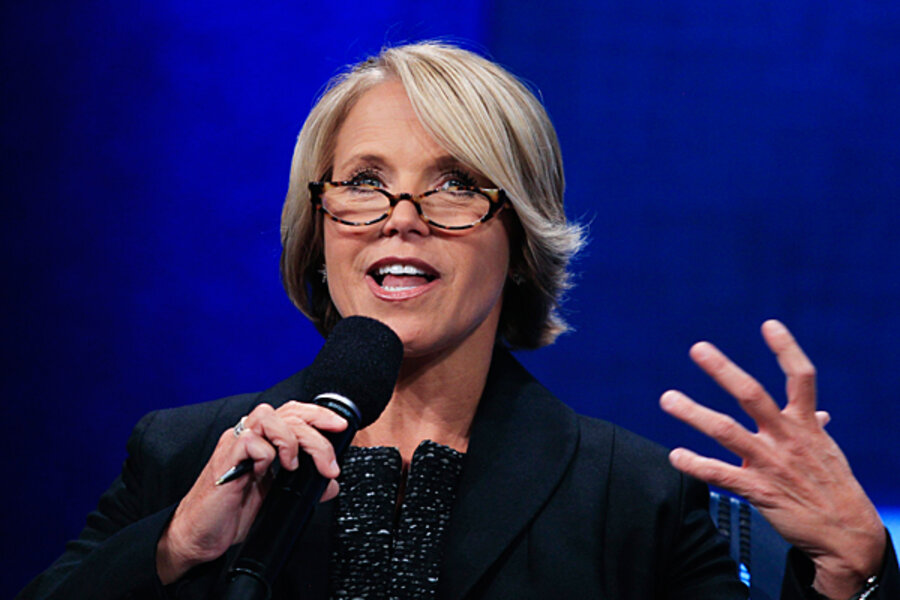Katie Couric election series: A nod to Charles Kuralt or Facebook?
Loading...
Feel as if the real America is not being represented on national TV? Want your voice to be heard? CBS anchor Katie Couric thinks so.
On Thursday night, she launched a new segment on her evening news program, called “American Voices.” To christen the series, which will air regularly between now and Nov. 2, she jetted over to Cleveland – the perennial shorthand for America’s heartland – to talk with unemployed voters.
In the series, Couric is clearly harking back to her glory days as a folksy one-on-one interviewer on the “Today” show, bringing heart to the news and a face to everyday America. But, says Fordham University’s Paul Levinson, author of “New New Media,” it is also clear evidence of just how far the traditional broadcast media have fallen behind the pace of the social-media revolution.
The revolution is one “in which people’s voices are being heard in a myriad of corners, from Facebook to Twitter,” Professor Levinson says. “It is interesting to watch the traditional media trying to be contemporary with a world that is passing them by.”
In Thursday’s segment, Ms. Couric first played a clip of President Obama in a Cleveland stopover two days before the 2008 presidential vote, in which he said the time for change had come. Then, the CBS anchor settled in at Slyman’s Restaurant – whose reputation for corned beef and working-class customers also earned a visit from President Bush in 2007. Now, Couric chatted here with two men and two women about themselves, their vision of the country, and their feelings about the future.
“I don’t know if angry is the right word, but concerned,” said Tim Myers, an auto-parts manufacturer out of work for 16 months. As Couric nodded sympathetically, others chimed in. “I’m not so angry at the situation because these things happen,” said Paul Levin, a lawyer who has been out of work for more than two years. He added, “What I’m angry at, or upset about, is that there is not an ability for people to cooperate to address the problem.”
Couric took a break to add some context to the chat: The No. 1 problem in Ohio (as in other places) is the job market. Nearly 600,000 jobs have been lost since 2000, and more than half of those have evaporated in the past two years.
Still, all four of the Ohioans said their fundamental outlook for the country is optimistic, and they are not generally looking for the government to create work for them.
“I really would have them not try and create jobs,” said Linda Trausch, a former ad-agency worker who now volunteers at a GOP call center. “I’d rather have them make a business-friendly environment.”
Couric’s venture is reminiscent of Charles Kuralt crisscrossing the nation in a bus decades ago for his now-classic “On the Road” segments. But in reality, says Levinson of Fordham, “it’s more of a sop to the new-media revolution.”
But, says Robert Thompson, founder of the Bleier Center for Television and Popular Culture at Syracuse University in New York, there is some value in the “stodgy, old-school broadcast television, yet.” With many of the new-media outlets, the conversation is largely anonymous and quite often, he notes, it has a divisive edge.
“Look at the comments you frequently see online, and the discourse can get sour very quickly,” he says. But, he says, while the format of the Couric series is old-fashioned, it fairly radiates a reasonableness, a “sanity of discourse that we are seeing less of these days.”
The TV cameras and formality of the interviews has “a moderating effect that is downright civil and a valuable contribution to an election cycle that has been filled with coverage of angry people,” he says.





